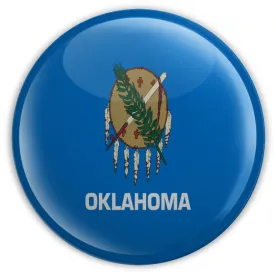As previously reported, an Oklahoma state court recently granted summary judgment to the Cherokee Nation for its COVID-19 business interruption claim. The court has now issued a more substantive opinion, establishing the merits of the Cherokee Nation’s claim and providing yet another blueprint for policyholders seeking to recover COVID-19-related losses under “all risk” commercial property insurance policies.
Most of the court’s opinion focuses on whether COVID-19 causes direct physical loss or damage. In framing the issue, the court noted that, despite the significance of the phrase “direct physical loss or damage,” the insurers “did not define that important phrase” within the policy. Weighing the policyholder’s and insurers’ competing policy interpretations in view of fundamental insurance principles, such as construing ambiguous policy language against the insurer and in favor of the policyholder, the court found that the central issue could have been preempted if the insurers “would have simply defined the phrase” within the policy that had been in use for over fifty years, despite courts having “begged” insurers to define the phrase to avoid the precise issue pending before the court.
Given those “pleas and known confusion” surrounding the phrase “direct physical loss,” the court took the insurers to task for making no attempt to clarify or define the phrase within the Cherokee Nation’s policy to avoid a court adopting the policyholder’s preferred interpretation that losses such as closure of a business in response to a pandemic would be covered.
However, the court did not need to rely on ambiguity principles because, not only did it find the Cherokee Nation’s interpretation to be reasonable, it found that the Cherokee Nation provided the only reasonable interpretation of “direct physical loss or damage” as used in the policy. Both plain meaning of the policy language and precedent demonstrated that, if conditions rendered property unusable for its intended purpose, those conditions fall within the scope of the policy’s all-risk coverage, even without “physical alteration” of the property. Noting the disjunctive “or” in “physical loss or damage,” the court emphasized that the policy must cover more than mere physical alteration, which would already be encompassed in the “damage” component of the phrase.
Other policy provisions confirmed that the policyholder’s interpretation of “physical loss or damage” is reasonable. Various exclusions intended to bar coverage for loss that did not require any “physical alteration” to property. The court reasoned that, if physical alteration were necessary to trigger coverage, those exclusions would be superfluous and contrary to black letter policy interpretation principles.
The fact that the insurers added a new communicable disease exclusion to the policy just one day after other tribes filed a similar action for COVID-19 losses further supported the conclusion that physical alteration is not necessary to trigger physical loss or damage. If pandemics were clearly not covered causes of loss, why would exclusions addressing communicable disease be required? The court correctly found that those exclusions would be unnecessary under the insurers’ narrow interpretation of coverage afforded by the all-risk policies at issue.
Finally, the court found that no exclusion barred coverage. The only loss claimed was due to the COVID-19 pandemic, but “a pandemic is a loss distinct from a virus.” Moreover, the Cherokee Nation’s property was still “rendered useless” due to the reasonable measures implemented in response to the pandemic, regardless of whether it could show definitively that the COVID-19 virus was or was not on its property.
The court also recognized that insurers clearly know how to regularly exclude pandemic and epidemic losses with “clear and distinct language” when they desire to do so, as evidenced by the presence of such exclusions in other policies, like the communicable disease exclusion implemented shortly after the Cherokee Nation suit was filed. The insurers failed to do so in the Cherokee Nation policy and, as a result, failed to carry their burden to demonstrate that the policy exclusions the insurers were relying on clearly and unambiguously applied to the claim.
The court similarly rejected the insurers’ reliance on the “loss of use” exclusion. Adopting the insurers’ position, which the court interpreted to mean that “all forms of loss of use are excluded,” would be to read the exclusion so broadly as to avoid coverage for virtually all losses of use, rendering the policy’s business interruption coverage illusory. Instead, the court deemed that the exclusion would not apply when the loss of use occurred as a response to some dangerous condition. Therefore, the court ruled that no exclusions applied to the Cherokee Nation’s claim.
The Oklahoma state court’s decision provides further support for policyholders seeking recovery for their extensive COVID-19 losses. Pending a likely appeal, this case serves as helpful precedent to demonstrate the merits of COVID-19 claims in cases across the country.





 />i
/>i

